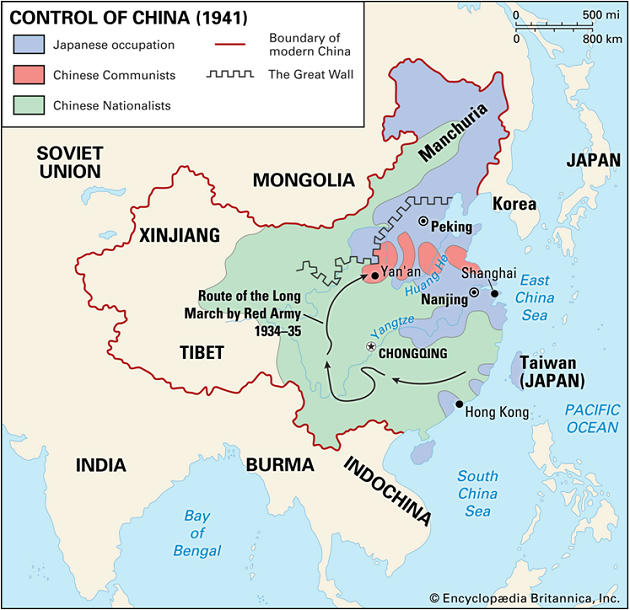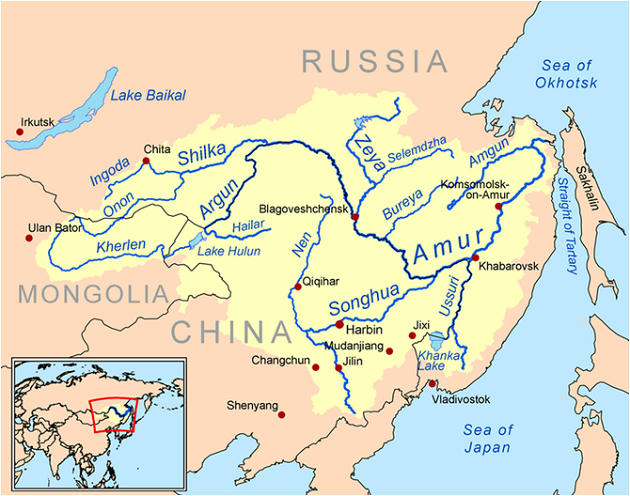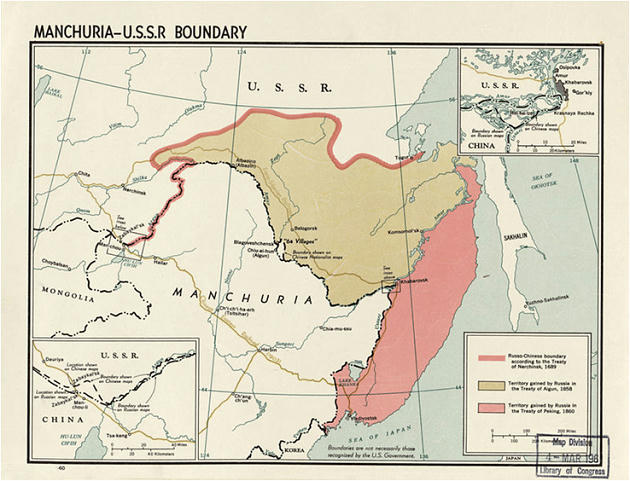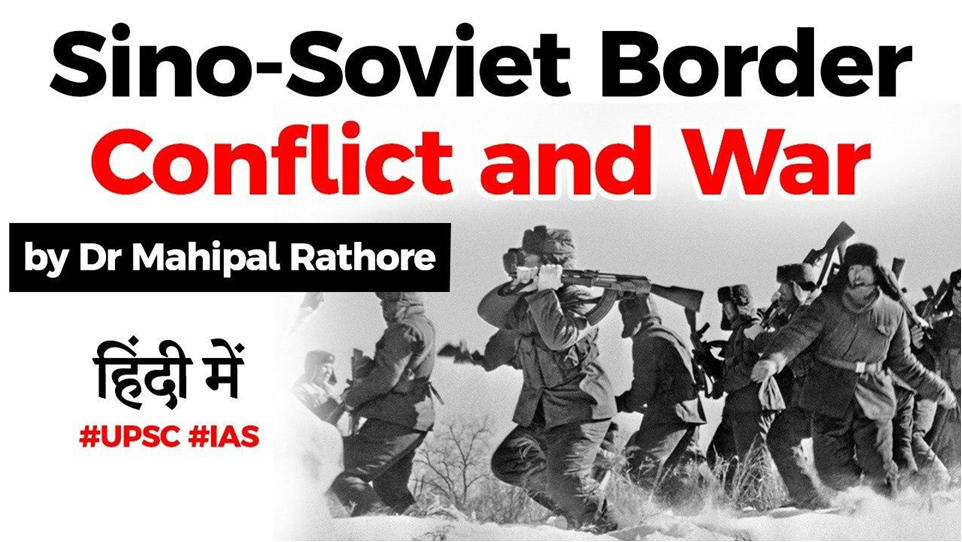Table of Contents
A tale of two ‘Reds’
- The Soviet Union and People’s Republic of China had a disputed border and fought a brief war in 1969.
- Both the countries followed the same communist ideology but still their relations were not always good.
Friends to ‘‘Enemies’’
- 1945 – USSR helped the Communist Party take control of Manchuria and ultimately win the Chinese civil war
- 1949 – PRC established with the blessings of USSR
- 1950 – Sino-Soviet Treaty of Friendship, Alliance and Mutual Assistance.
- Much technical and financial help provided by USSR to the new communist republic

The Sino Soviet Split
- 1956 – Differences between Mao and Khrushchev over the latter’s policy of ‘De-stalinization’
- 1956 – China criticized the USSR’s handling of Hungarian uprising of 1956.
- 1959 – USSR was not happy with Mao’s ‘Great leap forward’
- Eary 1960s – USSR signs nuclear test treaties with the USA – China sees this as ‘surrender’.
- 1962 – Soviet diplomatic relations broken off.
The Sino Soviet War of 1969
- A seven-month undeclared military conflict.
- A series of border clashes led to the larger ‘clash’ in March 1969
- It brought the world’s two largest communist (and nuclear) states to the brink of largescale war
- Trigger = Zhenbao (Damansky) Island on the Ussuri (Wusuli) River, near Manchuria.
- The Ussuri or Wusuli river



Were these islands important?
- As Sino-Soviet tensions heightened in the 1960s, ownership of these tiny, uninhabited, and strategically meaningless river islands along the Ussuri became an issue of contention.
- The river was designated as a boundary line between China and the Soviet Union by the 1860 Treaty of Peking.
- The specific dispute over the border centered on differing interpretations of the 1860 Treaty of Peking, which identified the Amur and Ussuri rivers as forming a part of the eastern boundary between China and Russia.
- There were two main points of contention.
- First, China repeatedly claimed that the Treaty of Peking was an “unequal” treaty forced upon a weak China by czarist Russia.
- China, according to this view, was forced to make concessions to a more powerful neighbor that “forcibly incorporated” 400,000 square kilometers of Chinese territory into Russia


Thalweg principle


- On 2 March 1969, Chinese troops ambushed and killed a group of Soviet border guards on Zhenbao Island, one of the many disputed islands on the Ussuri River.
- Armed skirmishes continued into the spring and summer, with both sides contributing to a massive military buildup in the region. For several harrowing months, as the world watched, China and Russia teetered on the brink of a nuclear conflict.
The Resolution
- The border crisis was defused diplomatically in September 1969, when Soviet Premier Kosygin flew to Beijing for high-level border talks with Chinese premier Chou Enlai.
- The conflict resulted in a ceasefire, with a return to the status quo.
- Ultimately, the dispute was resolved in a series of border agreements that Russia and China concluded in 1991, 1994 and 2004
- China received several hundred islands on the Argun, Amur, and Ussuri rivers, including Damansky (Zhenbao).
Impact on China’s Geopolitics
- ‘By initiating a limited attack, flexing some muscle, and killing a few Soviets, China sought to forcibly demonstrate that it could not be bullied, and that a future Soviet attack would be fiercely resisted.’
- Mao wanted to teach Moscow a “bitter lesson’’.
- China started talks with USA
- Normalisation of Relations with USA
- USA president Richard Nixon visited China in 1972
Latest Burning Issues | Free PDF






















 WhatsApp
WhatsApp